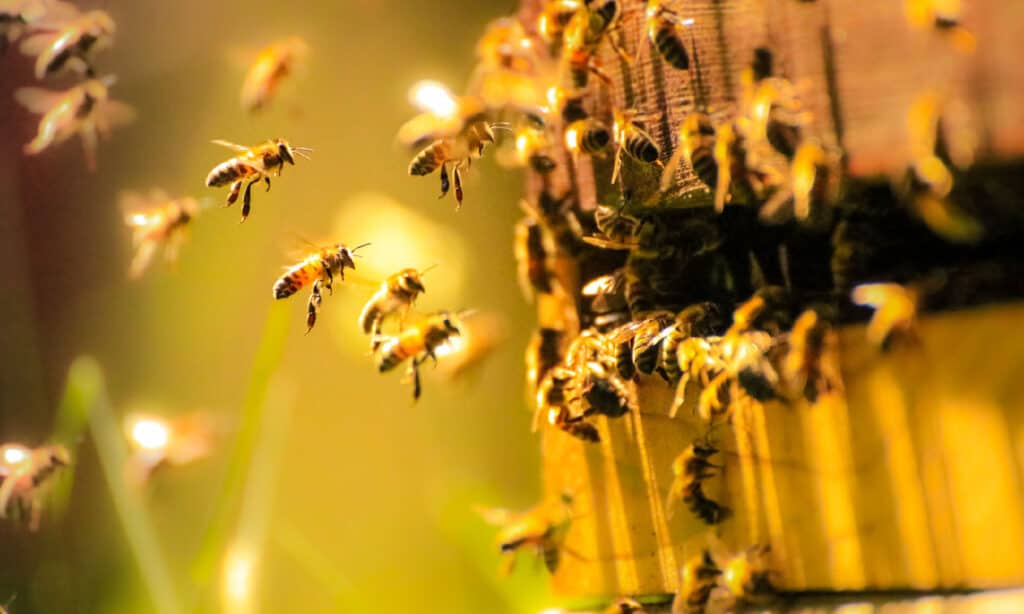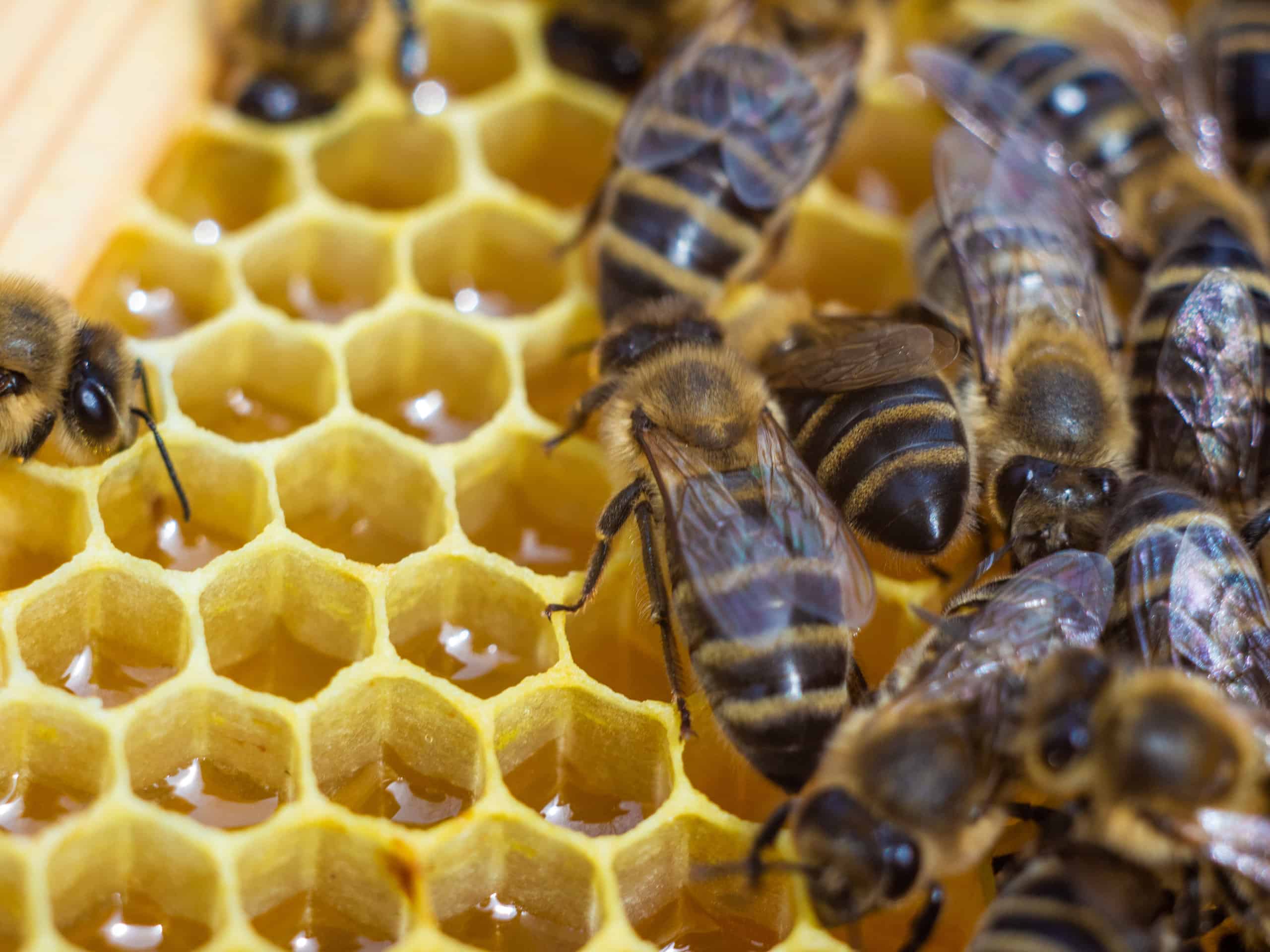Unless you work with bees intimately, when you hear them buzzing about, you likely just avoid them to prevent a sting. But there’s a lot that goes into bee colonies that’s worth learning about. The social organization is astounding. As is the practice of bee mating. Discover the fascinating process of bee reproduction!
Bee Mating and Bee Reproduction
Virgin queens are the ones that mate with several males, known as drones. The organization of the hive is precise, and each is assigned a specific role. The hive is where bees congregate and make honey but it also protects them from the elements and keeps the queen’s eggs safe.
The Social Organization of the Colony
Bee colonies are well organized and consist of the queen bee, drones, and worker bees. The queen is the only fertile female in the entire colony and the only mother in the hive. She has one primary job: to lay eggs and keep the colony going. Some she fertilizes and those become worker bees. The others that the queen chooses not to fertilize become drones.

Queen bees can lay over 3,000 eggs in a single day.
©iStock.com/Inventori
The Role of Drones in Bee Reproduction
The drones are the males that later can mate with queens from other colonies. It is their job to transfer sperm. The drones do not cooperate with anything in the hive except to regulate the temperature inside of it. They were born to be handsome and elegant. They are the eligible bachelors of the hive! They prepare a lifetime for one moment. When it is time to mate during a mating flight, the process is more like five seconds. When they unload all the sperm, all of a sudden, their existence does not appear so fancy anymore. From midair, they just drop dead. This is because they inject their endophallus into the queen, leaving their bodies ripped apart. It is a high price that the drones have to pay just to mate as it is a final act in the name of the survival of their species.
Mating With the Queen
The queen allows multiple drones to mate with her in midair, and she knows that the ultimate price that each drone has to pay is death. Nevertheless, she keeps allowing it to happen over and over again as she is on a mission. She can mate with up to 20 drones as she needs to collect millions of eggs. She keeps a few million stored in her spermathecal, which is where they can be stored safely for up to four years. The queen then decides whether they will be worker bees or drones.
Fertilized vs. Non-Fertilized Eggs
Fertilized eggs become queen bees or worker bees whereas the non-fertilized ones become drones or males. This decision is based on the needs of the colony such as foraging for food, protecting the hive, and nursing the brood. The worker bees do not have any mating privileges. They are there just to help take care of the colony.

Queen bees designate the role of each bee.
©iStock.com/William Jones-Warner
Where the Queen Lays Her Eggs
The queen can lay thousands of eggs daily depending on whether the hive is in need of more males or non-fertile females as workers. The beehive, with its honeycomb cells, provides the perfect environment for her eggs. Each cell houses her eggs perfectly. They’re only about one to 1.5 millimeters long. This occurs during the winter season, and she stays busy, laying up to 2,000 eggs each day. To remain safe and cocooned, the eggs connect to the cell via a mucous strand.
This is where they begin to develop. During the initial development stage, there is a progression of the nervous and digestive systems. It takes only three days before the eggs hatch and larvae emerge. The worker bees get to work right away and feed the larvae. Without this assistance from the worker bees, the larva cannot survive. They are still lacking wings, legs, and eyes. They have tiny mouths where they can receive sustenance, however. Eventually, they grow into the types of bees the queen has designated.
The Old Queen vs. the New Queen
Once the old queen can no longer have babies or her production begins to decrease, it is time for retirement and time to step down. The colony brings in a new queen which has already been on the radar. The old queen is smothered to death by cornering her so much that she overheats. Eventually, she dies, and the new queen takes her place so the cycle can begin all over again.
Thank you for reading! Have some feedback for us? Contact the AZ Animals editorial team.








